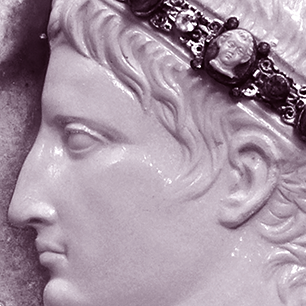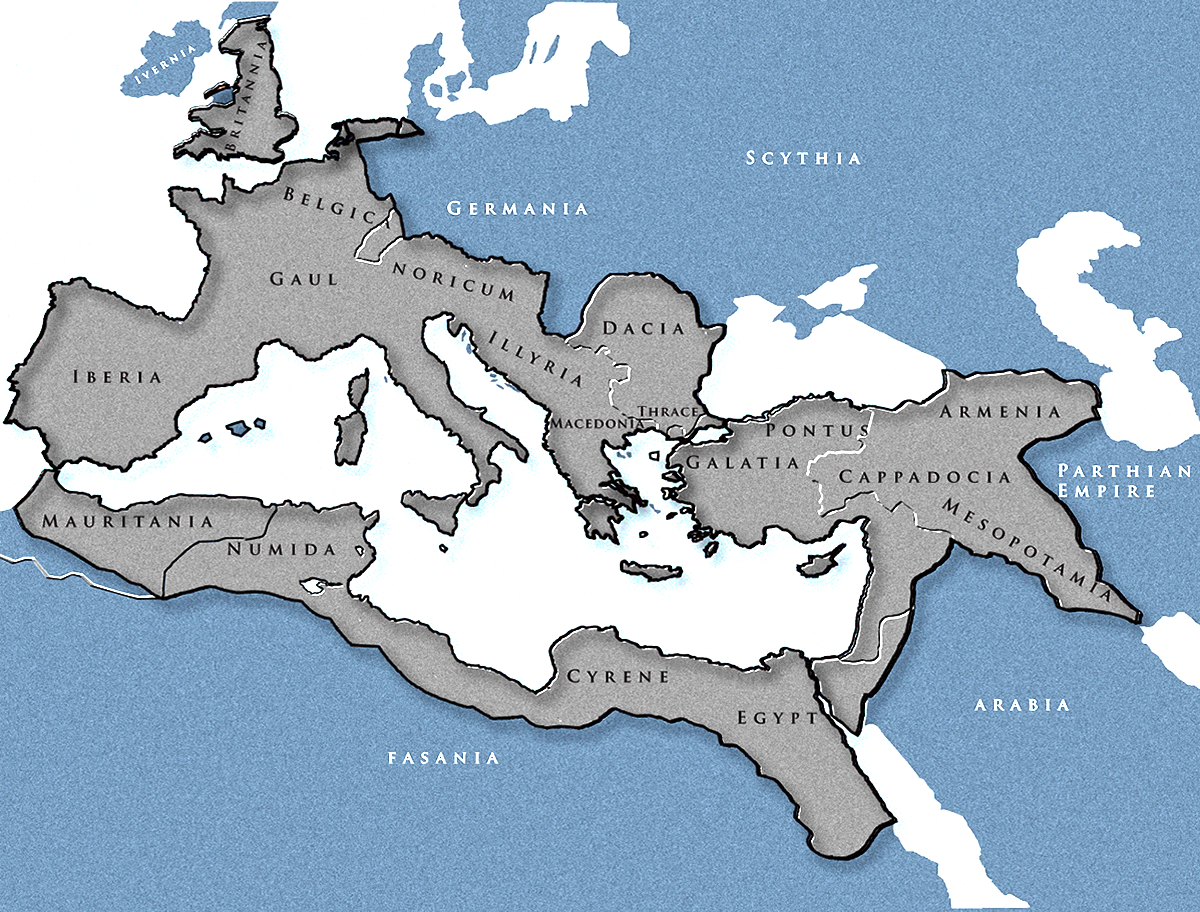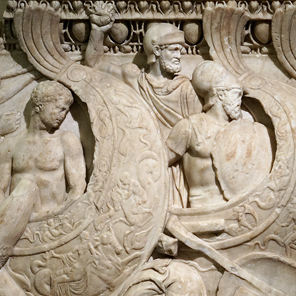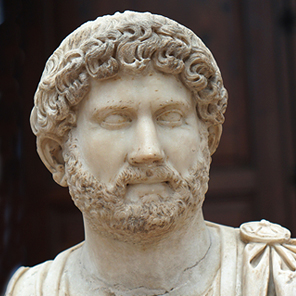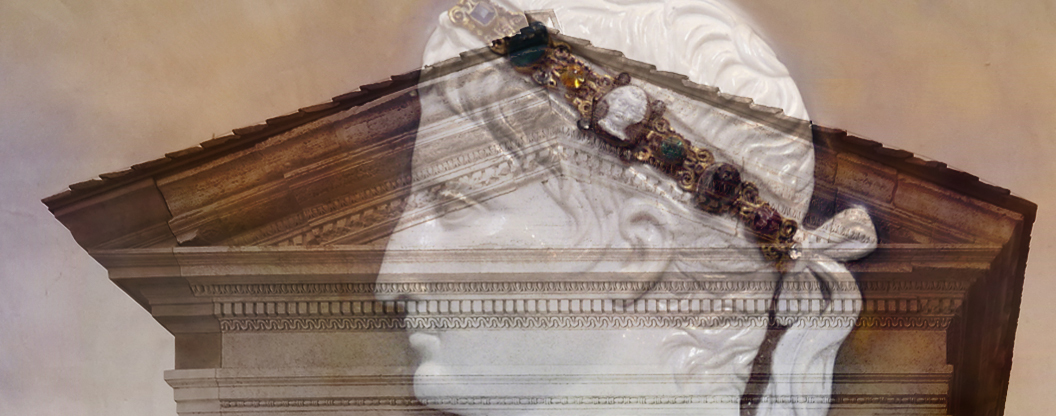The ROMAN CIVILIZATION
IMAGES OF THE ROMAN CIVILIZATION
THE ROMAN EMPIRE
in 117 ad the Roman Empire reached it's Maximum extent
The 500-year-old republic which preceded it was severely destabilized in a series of civil wars and political conflict, during which Julius Caesar was appointed as perpetual dictator and then assassinated in 44 BC. Civil wars and executions continued, culminating in the victory of Octavian, Caesar's adopted son, over Mark Antony and Cleopatra at the Battle of Actium in 31 BC and the annexation of Egypt. Octavian's power was now unassailable and in 27 BC the Roman Senate formally granted him overarching power and the new title Augustus, effectively marking the end of the Roman Republic. The frontiers of empire become stablized and properly defended. Professional careers are now possible in the army Improved roads make it easier to keep in close touch with distant parts of the Roman world, and to move troops wherever they are needed. New towns, built to Roman design, are established in areas where there was previously no administrative structure.The Mediterranean, became what it will remain for the next four centuries - a Roman sea.and during the same period, the story of Rome itself becomes submerged in that of the wider Roman Empire.
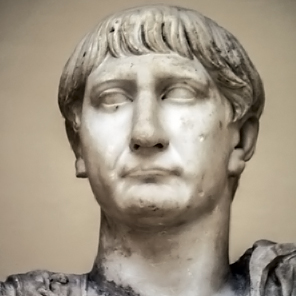
TRAJAN OF THE EMIPIRE
Trajan He was most a man of high ability and character who had spent half his life in military service and enjoyed the trust of all who knew him. On his death bed, Trajan adopts Hadrian and designates him as his successor.
THE POILTICS OF THE EMPIRE
It was the largest empire of the classical antiquity period,
The Roman Empire reaches its greatest extent. At the peak of Roman imperial power in the 2nd century, the population of the city numbered some 1.6 million
THE ROMAN EMPIRE
The imperial successor to the Republic lasted approximately 500 years. The first two centuries of the Empire's existence were a period of unprecedented political stability and prosperity known as the Pax Romana, or "Roman Peace". Following Octavian's victory, the size of the Empire was dramatically increased. Under Claudius, the Empire underwent its first major expansion since Augustus. After Claudius' successor, Nero, committed suicide in 68.
The Empire suffered a period of brief civil wars, as well as a concurrent major rebellion in Judea, during which four different legionary generals were proclaimed Emperor. Vespasian emerged triumphant in 69, establishing the Flavian dynasty, before being succeeded by his son Titus, who opened the Colosseum shortly after the eruption of Mt. Vesuvius. His short reign was followed by the long reign of his brother Domitian, who was eventually assassinated. The Senate then appointed the first of the Five Good Emperors. The Empire reached its greatest extent under Trajan, the second in this line.
A period of increasing trouble and decline began with the reign of Commodus. Commodus' assassination in 192 triggered the Year of the Five Emperors, of which Septimius Severus emerged victorious. The assassination of Alexander Severus in 235 led to the Crisis of the Third Century in which 26 men were declared Emperor by the Roman Senate over a fifty-year period. It was not until the reign of Diocletian that the Empire was fully stabilized with the introduction of the Tetrarchy, which saw four Emperors rule the Empire at once. This arrangement was ultimately unsuccessful, leading to a civil war that was finally ended by Constantine I, who defeated his rivals and became the sole ruler of the Empire.
Constantine subsequently shifted the capital to Byzantium, which was renamed Constantinople. It remained the capital of the east until its demise in 1453. Constantine adopted Christianity which later became the official state religion of the Empire. This eastern part of the empire (known later as the Byzantine Empire) remained one of the leading powers in the world alongside its arch-rival the Sassanid Persian Empire, which had inherited a centuries-old Roman-Persian conflict from its predecessor the Parthians.Following the death of Theodosius I, the last Emperor to rule a united Empire, the dominion of the Empire was gradually eroded by abuses of power, civil wars, barbarian migrations and invasions, military reforms and economic depression. The Sack of Rome in 410 by the Visigoths and again in 455 by the Vandals accelerated the Western Empire's decay, while the deposition of the Emperor Romulus Augustulus in 476 by Odoacer is generally accepted to mark the end of the Empire in the west.
The Eastern Roman Empire endured for another thousand years, eventually falling to the Ottoman Turks in 1453.
SIZE
The Empire reached its largest expanse under Trajan (reigned 98–117),encompassing an area of 5 million square kilometres that as of 2009 was divided among forty different modern countries. The traditional population estimate of 55–60 million inhabitants[41] accounted for between one-sixth and one-fourth of the world's total population
Then the empire stretched from Hadrian's Wall in drizzle-soaked northern England to the sun-baked banks of the Euphrates in Syria; from the great Rhine–Danube river system, which snaked across the fertile, flat lands of Europe from the Low Countries to the Black Sea, to the rich plains of the North African coast and the luxuriant gash of the Nile Valley in Egypt. The empire completely circled the Mediterranean ... referred to by its conquerors as mare nostrum—'our sea'.
Trajan's successor Hadrian adopted a policy of maintaining rather than expanding the empire. Borders (were marked, and the frontiers patrolled. The most heavily fortified borders were the most unstable. Hadrian's Wall, which separated the Roman world from what was perceived as an ever-present barbarian threat, is the primary surviving monument of this effort
The Roman Empire was among the most powerful economic, cultural, political and military forces in the world of its time. It was the largest empire of the classical antiquity period, and one of the largest empires in world history. At its height under Trajan, it covered 5 million square kilometres and held sway over some 70 million people, at that time, 21% of the world's entire population. The longevity and vast extent of the Empire ensured the lasting influence of Latin and Greek language, culture, religion, inventions, architecture, philosophy, law and forms of government on the Empire's descendants.
THE PRINCIPATE
Augustus had all meaningful authority in Rome. During the years of his rule, a new constitutional order emerged (in part organically and in part by design), so that, upon his death, this new constitutional order operated as before when Tiberius was accepted as the new Emperor. The 200 years that began with Augustus' rule is traditionally regarded as the Pax Romana ("Roman Peace"). During this period, the cohesion of the Empire was furthered by a degree of social stability and economic prosperity that Rome had never before experienced. Uprisings in the provinces were infrequent, but put down "mercilessly and swiftly" when they occurred. The sixty years of Jewish–Roman wars in the second half of the first century and the first half of the 2nd century were exceptional in their duration and violence.
The success of Augustus in establishing principles of dynastic succession. was limited by his outliving a number of talented potential heirs: the Julio-Claudian dynasty lasted for four more emperors — Tiberius, Caligula, Claudius and Nero — before it yielded in 69 AD to the strife-torn Year of Four Emperors, from which Vespasian emerged as victor. Vespasian became the founder of the brief Flavian dynasty, to be followed by the Nerva–Antonine dynasty which produced the "Five Good Emperors": Nerva, Trajan, Hadrian, Antoninus Pius and the philosophically inclined Marcus Aurelius. In the view of the Greek historian Dio Cassius, a contemporary observer, the accession of the emperor Commodus in 180 AD marked the descent "from a kingdom of gold to one of rust and iron"[17]—a famous comment which has led some historians, notably Edward Gibbon, to take Commodus' reign as the beginning of the decline of the Roman Empire.
In 212, during the reign of Caracalla, Roman citizenship was granted to all freeborn inhabitants of the Empire. But despite this gesture of universality, the Severan dynasty was tumultuous — an emperor's reign was ended routinely by his murder or execution — and, following its collapse, the Roman Empire was engulfed by the Crisis of the Third Century, a period of invasions, civil strife, economic disorder, and plague. In defining historical epochs, this crisis is sometimes viewed as marking the transition from Classical Antiquity to Late Antiquity. Aurelian (reigned 270–275) brought the Empire back from the brink and stabilised it.
THE DOMINATE
Diocletian completed the work of fully restoring the empire, but declined the role of princeps and became the first emperor to be addressed regularly as domine, "master" or “lord". This marked the end of the Principate, and the beginning of the Dominate. Diocletian's reign also brought the Empire's most concerted effort against the perceived threat of Christianity, the "Great Persecution". The state of absolute monarchy that began with Diocletian endured until the fall of the Eastern Roman Empire in 1453.
Diocletian divided the empire into four regions, each ruled by a separate Emperor (the Tetrarchy). Confident that he fixed the disorders that were plaguing Rome, he abdicated along with his co-emperor, and the Tetrarchy soon collapsed.
CHRISTIANTY
Order was eventually restored by Constantine, who became the first emperor to convert to Christianity, and who established Constantinople as the new capital of the eastern empire. During the decades of the Constantinian and Valentinian dynasties, the Empire was divided along an east–west axis, with dual power centers in Constantinople and Rome. The reign of Julian, who attempted to restore Classical Roman and Hellenistic religion, only briefly interrupted the succession of Christian emperors. Theodosius I, the last emperor to rule over both East and West, died in 395 AD after making Christianity the official religion of the Empire.
SOCIETY
The Roman Empire was remarkably multicultural, with "a rather astonishing cohesive capacity" to create a sense of shared identity while encompassing diverse peoples within its political system over a long span of time. The Roman attention to creating public monuments and communal spaces open to all—such as forums, amphitheaters, racetracks and baths—helped foster a sense of “Romanness"
SLAVES
At the time of Augustus, as many as 35 percent of the people in Italy were slaves, making Rome one of five historical "slave societies" in which slaves constituted at least a fifth of the population and played a major role in the economy. Slavery was a complex institution that supported traditional Roman social structures as well as contributing economic utility. In urban settings, slaves might be professionals such as teachers, physicians, chefs, and accountants, in addition to the majority of slaves who provided trained or unskilled labour in households or workplaces. Agriculture and industry, such as milling and mining, relied on the exploitation of slaves
FREEDMEN
Rome differed from Greek city-states in allowing freed slaves to become citizens. After manumission, a slave who had belonged to a Roman citizen enjoyed not only passive freedom from ownership, but active political freedom (libertas), including the right to vote.[ A slave who had acquired libertas was a libertus ("freed person," feminine liberta) in relation to his former master, who then became his patron (patronus): the two parties continued to have customary and legal obligations to each other.
MILITARY
The soldiers of the Imperial Roman army were professionals who volunteered for 20 years of active duty and five as reserves. The transition to a professional military had begun during the late Republic, and was one of the many profound shifts away from republicanism, under which an army of conscripts had exercised their responsibilities as citizens in defending the homeland in a campaign against a specific threat. For Imperial Rome, the military was a full-time career in itself.
